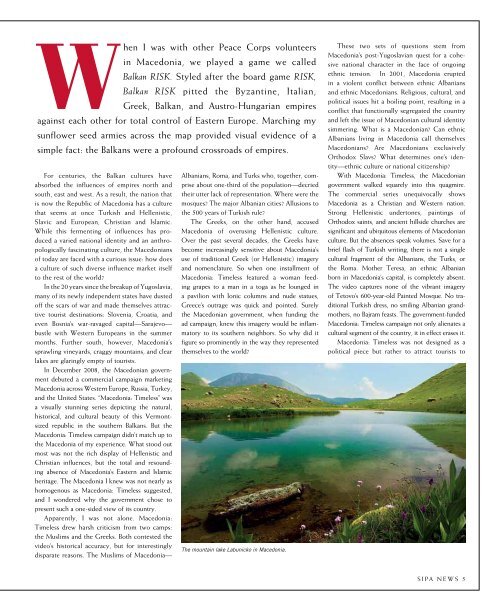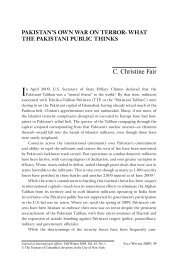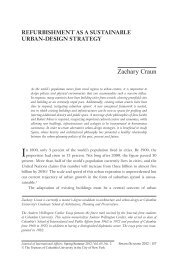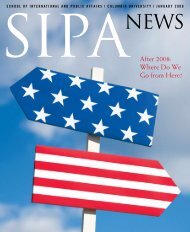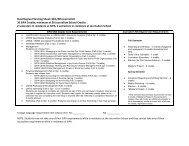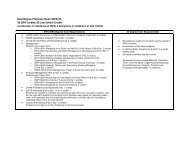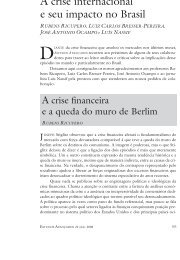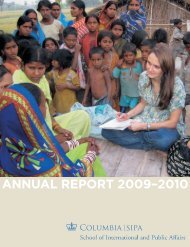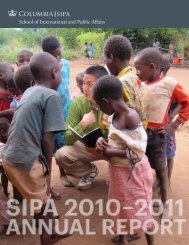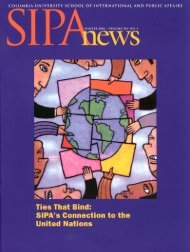SIPANewS - SIPA - Columbia University
SIPANewS - SIPA - Columbia University
SIPANewS - SIPA - Columbia University
Create successful ePaper yourself
Turn your PDF publications into a flip-book with our unique Google optimized e-Paper software.
When I was with other Peace Corps volunteers<br />
in Macedonia, we played a game we called<br />
Balkan RISK. Styled after the board game RISK,<br />
Balkan RISK pitted the Byzantine, Italian,<br />
Greek, Balkan, and Austro-Hungarian empires<br />
against each other for total control of Eastern Europe. Marching my<br />
sunflower seed armies across the map provided visual evidence of a<br />
simple fact: the Balkans were a profound crossroads of empires.<br />
For centuries, the Balkan cultures have<br />
absorbed the influences of empires north and<br />
south, east and west. As a result, the nation that<br />
is now the Republic of Macedonia has a culture<br />
that seems at once Turkish and Hellenistic,<br />
Slavic and European, Christian and Islamic.<br />
While this fermenting of influences has produced<br />
a varied national identity and an anthropologically<br />
fascinating culture, the Macedonians<br />
of today are faced with a curious issue: how does<br />
a culture of such diverse influence market itself<br />
to the rest of the world?<br />
In the 20 years since the breakup of Yugoslavia,<br />
many of its newly independent states have dusted<br />
off the scars of war and made themselves attractive<br />
tourist destinations: Slovenia, Croatia, and<br />
even Bosnia’s war-ravaged capital—Sarajevo—<br />
bustle with Western Europeans in the summer<br />
months. Further south, however, Macedonia’s<br />
sprawling vineyards, craggy mountains, and clear<br />
lakes are glaringly empty of tourists.<br />
In December 2008, the Macedonian government<br />
debuted a commercial campaign marketing<br />
Macedonia across Western Europe, Russia, Turkey,<br />
and the United States. “Macedonia: Timeless” was<br />
a visually stunning series depicting the natural,<br />
historical, and cultural beauty of this Vermontsized<br />
republic in the southern Balkans. But the<br />
Macedonia: Timeless campaign didn’t match up to<br />
the Macedonia of my experience. What stood out<br />
most was not the rich display of Hellenistic and<br />
Christian influences, but the total and resounding<br />
absence of Macedonia’s Eastern and Islamic<br />
heritage. The Macedonia I knew was not nearly as<br />
homogenous as Macedonia: Timeless suggested,<br />
and I wondered why the government chose to<br />
present such a one-sided view of its country.<br />
Apparently, I was not alone. Macedonia:<br />
Timeless drew harsh criticism from two camps:<br />
the Muslims and the Greeks. Both contested the<br />
video’s historical accuracy, but for interestingly<br />
disparate reasons. The Muslims of Macedonia—<br />
Albanians, Roma, and Turks who, together, comprise<br />
about one-third of the population—decried<br />
their utter lack of representation. Where were the<br />
mosques? The major Albanian cities? Allusions to<br />
the 500 years of Turkish rule?<br />
The Greeks, on the other hand, accused<br />
Macedonia of overusing Hellenistic culture.<br />
Over the past several decades, the Greeks have<br />
become increasingly sensitive about Macedonia’s<br />
use of traditional Greek (or Hellenistic) imagery<br />
and nomenclature. So when one installment of<br />
Macedonia: Timeless featured a woman feeding<br />
grapes to a man in a toga as he lounged in<br />
a pavilion with Ionic columns and nude statues,<br />
Greece’s outrage was quick and pointed. Surely<br />
the Macedonian government, when funding the<br />
ad campaign, knew this imagery would be inflammatory<br />
to its southern neighbors. So why did it<br />
figure so prominently in the way they represented<br />
themselves to the world?<br />
The mountain lake Labunicko in Macedonia.<br />
These two sets of questions stem from<br />
Macedonia’s post-Yugoslavian quest for a cohesive<br />
national character in the face of ongoing<br />
ethnic tension. In 2001, Macedonia erupted<br />
in a violent conflict between ethnic Albanians<br />
and ethnic Macedonians. Religious, cultural, and<br />
political issues hit a boiling point, resulting in a<br />
conflict that functionally segregated the country<br />
and left the issue of Macedonian cultural identity<br />
simmering. What is a Macedonian? Can ethnic<br />
Albanians living in Macedonia call themselves<br />
Macedonians? Are Macedonians exclusively<br />
Orthodox Slavs? What determines one’s identity—ethnic<br />
culture or national citizenship?<br />
With Macedonia: Timeless, the Macedonian<br />
government walked squarely into this quagmire.<br />
The commercial series unequivocally shows<br />
Macedonia as a Christian and Western nation.<br />
Strong Hellenistic undertones, paintings of<br />
Orthodox saints, and ancient hillside churches are<br />
significant and ubiquitous elements of Macedonian<br />
culture. But the absences speak volumes. Save for a<br />
brief flash of Turkish writing, there is not a single<br />
cultural fragment of the Albanians, the Turks, or<br />
the Roma. Mother Teresa, an ethnic Albanian<br />
born in Macedonia’s capital, is completely absent.<br />
The video captures none of the vibrant imagery<br />
of Tetovo’s 600-year-old Painted Mosque. No traditional<br />
Turkish dress, no smiling Albanian grandmothers,<br />
no Bajram feasts. The government-funded<br />
Macedonia: Timeless campaign not only alienates a<br />
cultural segment of the country, it in effect erases it.<br />
Macedonia: Timeless was not designed as a<br />
political piece but rather to attract tourists to<br />
<strong>SIPA</strong> NEWS 5


